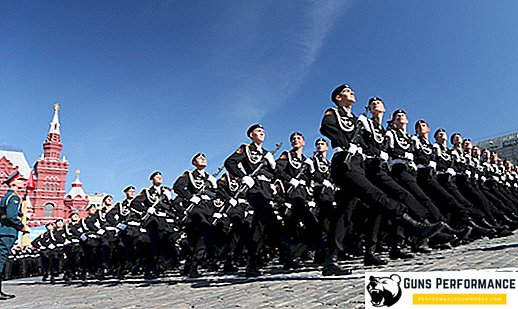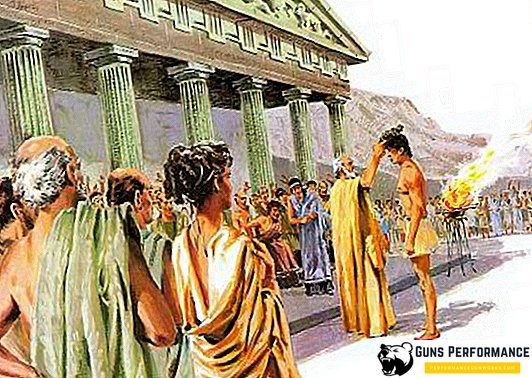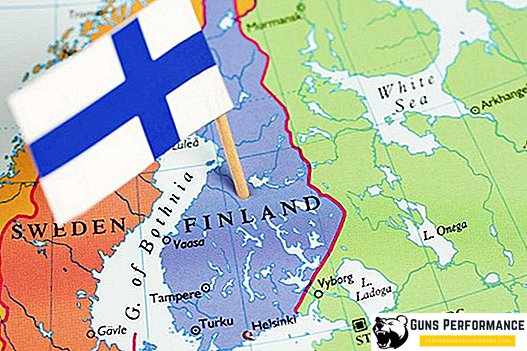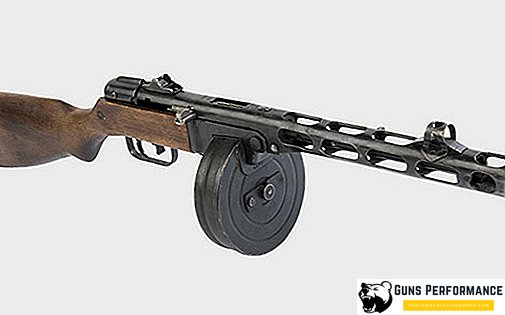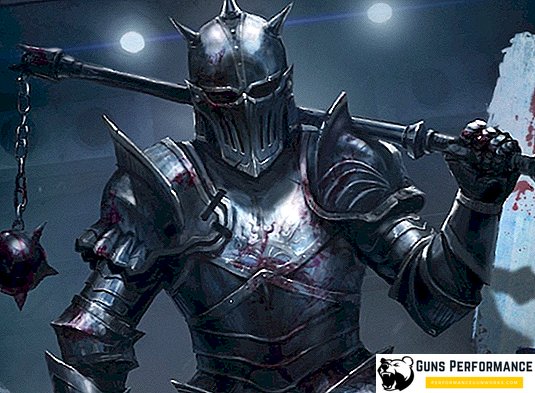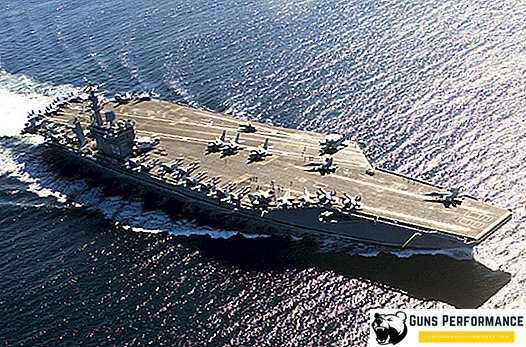Korea before World War II
Throughout its history, Korea has often been forced to depend on its more powerful neighbors. Thus, as early as 1592-1598, the country waged a war with Japan, as a result of which the Koreans still managed to defend their independence, albeit with the help of the Empire of Min. However, in the 17th century, after a series of Manchu invasions, the country became a tributary of the Min Empire.
By the middle of the 19th century, Korea was considered a formally independent state, but the backwardness of the economy and general weakness made it seriously dependent on the Qing Empire. At the same time, there was a revolutionary movement in the country whose goal was to bring the country out of stagnation caused by the presence of deeply conservative forces in power. In this regard, the Korean leadership turned for help to the Qing Empire, which sent troops into the country. In response, Japan sent its troops to Korea, thereby unleashing a war. As a result of this war, the Qing Empire suffered a heavy defeat, and Korea became a protectorate of Japan.
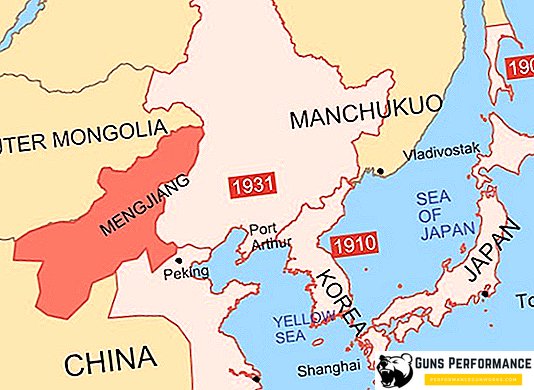
Russian-Japanese War of 1904-1905 very seriously influenced the situation in Korea. During this war, Japanese troops under the guise of necessity occupied the territory of the country and after its end were no longer withdrawn. Thus, Korea actually became part of the Japanese Empire. However, the formal annexation of the country took place only in 1910. The domination of Japan here lasted exactly 35 years.
World War II and the division of the country
In 1937, the war of Japan against China began. In this war, Korea was a very convenient base for the supply of the Japanese army and the transfer of troops to China. Also, due to its advantageous geographical location, Korea has become a very convenient place to deploy Japanese air and naval bases.
In the country itself, the situation of the population deteriorated every year. First of all, this was caused by the Japanese policy of assimilation, which aimed to make Korea an integral part of Japan, such as Hokkaido Island, for example. In 1939, a decree was issued, according to which Koreans could change names to Japanese. At the same time, this was formally only allowed; in fact, it was highly recommended. Those who did not succeed were condemned and even subjected to discrimination. As a result, by 1940 approximately 80% of the Korean population had to get new, Japanese names. Also Koreans were subject to a call in the Japanese army.
As a result, by 1945, the situation in Korea was quite close to the uprising. However, the proximity of a powerful Japanese group in Manchuria (the Kwantung Army) and the presence of large Japanese military bases on the territory of the country itself made the potential uprising almost doomed.
On August 8, 1945, the USSR entered the war against Japan. The troops of the 1st Far Eastern Front entered the territory of Korea and, overcoming the resistance of the Japanese troops, by August 24 landed troops in Pyongyang. By this time, the Japanese leadership realized the futility of further resistance, and in Manchuria, China and Korea, the surrender of the Japanese units began.
By the end of World War II, the territory of Korea was divided between the USSR and the USA along the 38th parallel. The zones of occupation of the two countries were designated only temporarily, since in the near future it was supposed to unite the country. However, as a result of the cooling of relations between the Soviet Union and yesterday’s allies and the beginning of the Cold War, the prospects for unification became increasingly vague and uncertain.
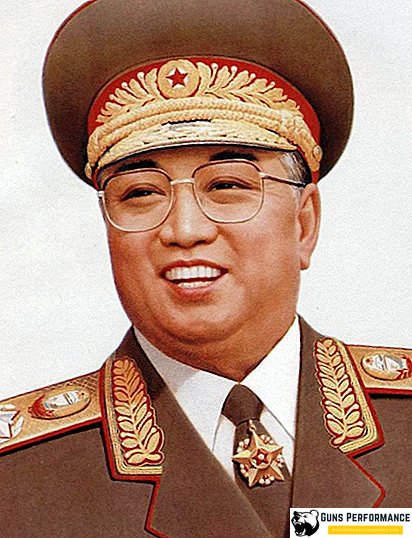
Already in 1946, the Provisional Government was formed in North Korea, consisting of the communist pro-Soviet forces. Headed this government Kim Il Sung. At the same time, in the south of Korea, in opposition to the communist government, a government was formed that relied on the United States. It was headed by Lee Seung Man, leader of the anti-communist movement.

On September 9, 1948, the Democratic People’s Republic of Korea was proclaimed in the north. In the south, the Republic of Korea did not formally declare independence, as it was believed that the country was simply liberated from the Japanese occupation. From Korea, the Soviet and American troops were withdrawn in 1949, thereby providing the unification of both parts of the country.
However, relations between the northern and southern parts of Korea were by no means welcoming. This lay primarily in the fact that Kim Il Sung and Lee Seung Man did not at all conceal their intentions to unite Korea precisely under their authority. Thus, the unification of the country by peaceful means has become almost impossible. Having exhausted peaceful means to achieve their goals, both Korean governments resorted to armed provocations at the border.

A large number of violations and skirmishes at the border led to the situation at the 38th parallel being quickly tense. By 1950, the leadership of the PRC was closely watching the Korean conflict, believing that destabilization of the situation in Korea could also have an impact on the situation in China.
Formally, preparations for the invasion began in North Korea as early as 1948, when it became clear that the country could not unite peacefully. At the same time, Kim Il Sung addressed JV Stalin with a request to provide military assistance in case of a possible invasion, which he was refused. The Soviet leadership was not interested in a possible clash with the United States, which, moreover, had nuclear weapons.
However, by the summer of 1950, the conflict in Korea was practically formed and was ready to break out. Both the northern and southern sides were determined to unite the country under their control, including by military means. However, the determination on the north side was greater. It also clarified the situation and the statement of US Secretary of State Dean Acheson that Korea is not in the sphere of vital US interests. Clouds have gathered over Korea ...
The beginning of the war (June 25 - August 20, 1950)
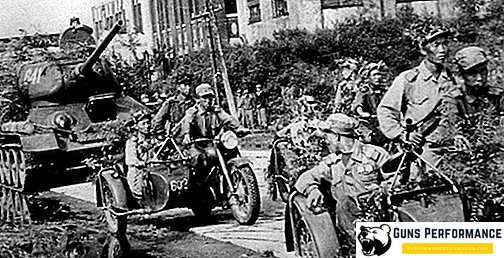
Early in the morning of June 25, 1950, the DPRK army launched an invasion of South Korean territory. Border battles began, which turned out to be very short-lived.
Initially, the number of North Korean groups was about 175 thousand people, about 150 tanks, including T-34s, transferred by the Soviet Union, about 170 aircraft. The South Korean group against them numerically amounted to approximately 95 thousand people and practically did not have in its composition either armored vehicles or airplanes.
Already in the first days of the war, the advantage of the DPRK army over the enemy became obvious. Having defeated the South Korean troops, she rushed into the interior of the country. Already on June 28, the capital of the Republic of Korea, Seoul, was taken. The South Korean troops retreated in disarray to the south.
On June 25, the UN Security Council was convened on an urgent basis. The resolution adopted at the meeting decided to condemn the North Korean side of the conflict and allowed the UN troops to enter the war on the side of South Korea. The resolution caused a negative reaction among the countries of the socialist camp. However, its implementation began immediately.
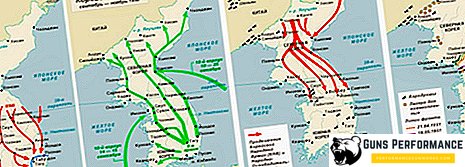
In July-August 1950, during the Daejeon and Naktongan operations, the North Korean troops managed to defeat a number of divisions of the South Korean army and the United States and push the enemy forces back to a small bridgehead in Busan. This section of land, 120 km wide and approximately 100 km deep, was the last stronghold for South Korean troops and UN forces. All attempts by the DPRK army to break through this perimeter ended in failure.
However, the result of almost two-month battles was the operational victory of the DPRK: about 90% of all of Korea was in the hands of the Communists, and South Korean and American troops suffered heavy losses. Nevertheless, the troops of South Korea were not completely destroyed and retained their potential, and the fact that North Korea had in the camp of its opponents the United States, which had a very high military and industrial potential, almost deprived North Korea of chances of winning the war.
The turning point in the war (August - October 1950)
In August and early September, fresh units of the UN troops, the US, as well as military equipment were urgently transferred to the Pusan bridgehead. This operation in terms of the volume of transported troops and equipment was the largest after the Second World War.
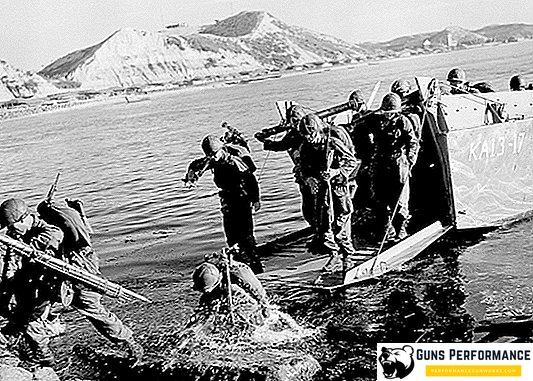
As a result, by September 15, 1950, the troops of the so-called "Southern Alliance" had 5 South Korean and 5 American divisions, one British brigade, about 1,100 aircraft and about 500 tanks on the Pusan bridgehead. The North Korean troops that opposed them had 13 divisions and about 40 tanks.
On September 15, American troops suddenly landed troops in the area of Incheon, about 30 kilometers west of Seoul, for the North Korean leadership. An operation called "Chromitis" began. In the course of it, a combined US-South Korean-British landing force captured Inchon and, breaking through the weak defense of the North Korean troops on this sector, began to move inland with the goal of uniting with the coalition forces operating on the Busan bridgehead.
For the leadership of the DPRK, this landing was a complete surprise, which led to the need to transfer part of the troops from the Pusan bridgehead to the landing place in order to localize it. However, it was almost impossible to do so. The units that covered the Pusan bridgehead by this time were drawn into heavy defensive battles and suffered serious losses.
At this time, both groups of the "southern coalition", advancing from the Busan and Incheon bridgeheads, launched an offensive towards each other. As a result, they managed to meet on September 27 in the district of Esan. The combination of the two coalition groupings in fact created a catastrophic situation for the DPRK, since the 1st Army Group was thus surrounded. Nevertheless, in the area of the 38th parallel and to the north of it, defensive lines were frantically created, which, ultimately, could not hold up the troops of the "southern coalition" for a long time due to lack of funds and time for their equipment.
On September 28, UN forces liberated Seoul. By this time, the front line was moving more confidently to the 38th parallel. In early October, border battles took place here, but, as in June, they were short-lived, and soon the troops of the "southern coalition" rushed to Pyongyang. Already in the 20th of the month the capital of the DPRK was taken due to the land offensive and airborne assault.
Entry into the War of China (November 1950 - May 1951)
The Chinese leadership, who had just recovered from the recently completed civil war, watched with alarm the successes of the "southern coalition" in Korea. The emergence as a result of the defeat of the DPRK of a new capitalist state at the side of China was extremely undesirable and even harmful for the resurgent China.
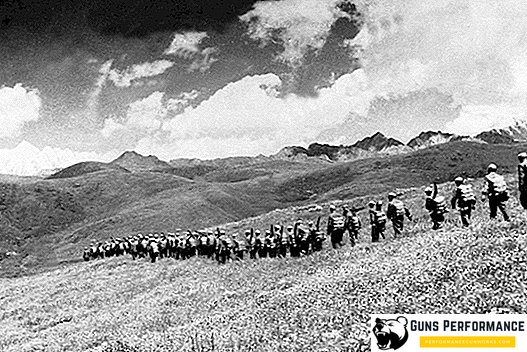
It is for this reason that the leadership of the PRC has repeatedly stated that the country will enter the war if any non-Korean forces cross the line of the 38th parallel. However, the troops of the "southern coalition" already in the middle of October crossed the border and, developing the offensive, continued their advance. The fact that President Truman did not really believe in the possibility of China joining the war also had an effect, believing that he would limit himself to only blackmail the United Nations.
However, on October 25, China still entered the war. The 250,000-strong group under the command of Peng Dehuai defeated part of the UN forces, but then was forced to retreat to the mountains in North Korea. At the same time, the USSR sent its planes into the sky of Korea, which, nevertheless, did not come closer to the front line than 100 kilometers. In this regard, the activity of the US Air Force in the skies of Korea dropped sharply, as the Soviet MiG-15s turned out to be technically more advanced than the F-80 and in the very first days caused significant damage to the enemy. Several leveled the situation in the sky new American F-86 fighter jets, which could be about equal fight with Soviet aircraft.
In November 1950, a new offensive by the Chinese forces began. During it, the Chinese, together with the North Korean troops, succeeded in crushing the UN forces and pressing a large enemy force to the coast of the Sea of Japan in the Hinnam area. However, the low combat capability of the Chinese army, combined with the massed offensive templates used during the civil war of 1946-1949, did not allow the destruction of this grouping of the "southern coalition".
However, the course of the war broke again. Now the "northern coalition" was leading the offensive, pursuing the retreating UN troops. January 4, 1951 was taken Seoul. At the same time, the situation became so critical for the "southern coalition" that the US leadership seriously thought about the possibility of using nuclear weapons against China. However, by the end of January, the Chinese offensive was halted on the Pyeonghek-Wonju-Yonvol-Samchhok line by UN forces. The main reason for this stop was both the fatigue of the Chinese troops, and the transfer of the UN forces to Korea and the desperate efforts of the leadership of the "southern coalition" to stabilize the front. In addition, the overall level of training of the commanders of the UN forces was disproportionately higher than that of the leadership of the Chinese and North Korean troops.
After the front line was relatively stabilized, the command of the "southern coalition" undertook a series of operations in order to counter-attack and liberate areas south of the 38th parallel. Their result was the defeat of the Chinese troops and the release in mid-March 1951 of Seoul. By April 20, the front line was in the area of the 38th parallel and almost repeated the pre-war border.
Now it was the turn for the offensive of the "northern coalition". And this offensive began on May 16th. However, if during the first days the Chinese troops managed to occupy a number of territories and reach the distant approaches to Seoul, then on May 20-21 this offensive was finally stopped. The counterattack of the South forces that followed it made the pretty exhausted Chinese troops withdraw again to the line of the 38th parallel. Thus, the May offensive of the "northern coalition" failed.
Positional stage and the end of the war
In June 1951, it finally became clear that neither side could achieve a decisive victory. Both the "northern" and "southern" coalitions had about a million soldiers, which made their orders on a relatively narrow stretch of land on the Korean Peninsula very dense. This ruled out any opportunity for quick breakthrough and maneuver. It became clear that the war must end.
The first peace negotiations were made in the city of Kaesong in July 1951, but then nothing was agreed upon. And the requirements of the UN, and China, and the DPRK were the same: the border between the two Koreas was to return to the pre-war one. However, the inconsistency in detail led to the fact that the negotiations dragged on for two whole years, and even during them both sides carried out bloody offensive operations that did not lead to any noticeable results.
On July 27, 1953, a cease-fire agreement was signed at Caesn. This treaty provided for some changes in the boundaries between the two parts of Korea, the creation of a demilitarized zone between the two states and the end of hostilities. It is noteworthy that the city of Kaesong, being a part of South Korea before the war, after the conflict came under the authority of the DPRK. With the signing of the cease-fire treaties, the Korean War is almost over. However, the peace treaty was not formally signed, and, consequently, legally the war continues.
Implications and Outcomes of the Korean War
None of the parties can definitely be called the winner in the war. In fact, we can say that the conflict ended in a draw. However, it is worth mentioning the goals pursued by the parties in order to understand who was able to achieve the goal. The goal of the DPRK, like the Republic of Korea, was to unite the country under its power, which was never achieved. As a result, both parts of Korea have not achieved their goals. The goal of China was to prevent the emergence of a capitalist state at its borders, which was achieved. The goal of the UN was to preserve both parts of Korea (after 1950), which was also achieved. Thus, China and the UN achieved their goals, being allies of the main warring parties.
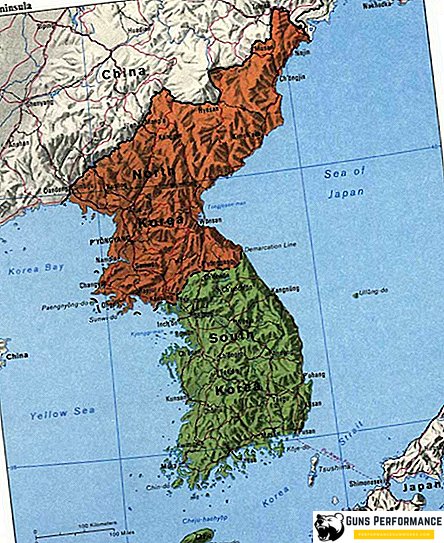
The losses of the parties vary greatly according to different estimates. The particular difficulty in calculating losses is not only that many third-country military personnel took part in the war, but also that in the DPRK, for example, the loss figures are classified. It is worth noting that, according to the most reliable data, the troops of the "northern coalition" lost about one million people, of which about 496 thousand were killed and dead from wounds and diseases. As for the "southern coalition", its losses were somewhat less - about 775 thousand people, of which the number of those killed is about 200 thousand. Definitely worth adding to the military casualties and even one million dead Koreans from the DPRK and the Republic of Korea.
Война в Корее стала настоящей гуманитарной катастрофой для страны. Сотни тысяч человек были вынуждены покинуть свои дома ввиду боевых действий. Страна получила огромный урон, что существенно замедлило её развитие в следующее десятилетие. Политическая обстановка тоже оставляет желать лучшего. Враждебность между двумя государствами, в чём и заключались причины Корейской войны, никуда по сути не делась, даже несмотря на ряд шагов, предпринятых правительствами Северной и Южной Кореи для деэскалации напряжённости. Так, в апреле 2013 года кризис чуть было не привёл к полномасштабной войне. Это, наряду с ядерными и ракетными испытаниями в КНДР, отнюдь не способствует нормализации обстановки и адекватному диалогу между государствами. Тем не менее, лидеры обоих государств всё же надеются на объединение в будущем. Что будет далее - покажет время.


